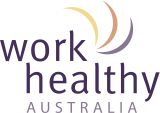

Mental health in the workplace is becoming a very important discussion. Traditionally, it has been thought that a worker’s mental illness develops outside of the workplace.
It is now emerging that job stress and other work-related psychosocial hazards are one of the leading contributors to the burden of occupational disease and injury.
‘Unhealthy’ work environments or workplace incidents can also cause considerable stress. It may also exacerbate or contribute to the development of mental illness.
A PwC and Beyond Blue analysis found that the total impact of untreated mental health conditions to the Australian workforce was approximately $11 billion.
“Australian businesses lose over $6.5 billion annually by failing to provide early intervention/treatment for employees with mental health conditions.”

So what can be done?
There are many things that a workplace can do to create a mentally ‘healthy’ environment. These strategies should cover different elements of the business at an individual and organisational level. These can include, but are not limited to:
- Healthy food options
- Flexible work arrangements
- Free counselling through an employee assistance program
- Improving the working environment ie. natural light, plants, social spaces
- Having effective policies and procedures
- Improving the mental health literacy of the workplace through training and education.
One of the leading education programs for mental health is mental health first aid training.
What is mental health first aid?
Mental health first aid (MHFA) is the help offered to a person developing a mental health problem, experiencing a worsening of an existing mental health problem or in a mental health crisis.
MHFA training follows the very successful physical first-aid training model. MHFA training does not give the ability to diagnose mental illnesses, but it gives individuals the tools to recognise the signs and symptoms of different mental illnesses and crises, how to offer initial help and how to guide a person towards appropriate professional help.
Research has shown that MHFA training has been associated with:
- Improved knowledge of mental illnesses, their treatments and appropriate first aid strategies.
- Confidence in providing first aid to a person experiencing a mental health problem.
- Decreases in stigmatising attitudes.
- Increases in the amount and type of support provided to others.
Make mental health a priority in the workplace
Everyone would benefit from attending MHFA training.
Mental health first aid is most effective as an early intervention. Early interventions target people who are just developing mental illnesses and aim to prevent problems becoming more serious.
Studies have shown the longer people delay getting help and support, the more difficult their recovery can be. Furthermore, people are more likely to seek help if someone close to them suggests it.
This can be particularly beneficial in the workplace to:
- Train your managers and workers so they better understand psychological health and safety risks
- Recognise early warning signs
- Establish clear policies on workplace behaviour and effective procedures for managing complaints
- Developing mental health policies and expectations
- Provide information for workers on how to report psychological health and safety concerns
Additional resources:
Human Rights Commission, Workers with Mental Illness: a Practical Guide for Managers
PwC, Creating a mentally healthy workplace – a return on investment analysis
Safe Work Australia, Work-related psychological health and safety
Heads Up, What is a healthy workplace?
Sign up to our monthly enewsletter
"*" indicates required fields
